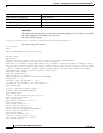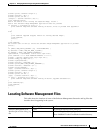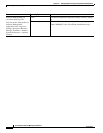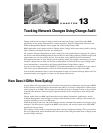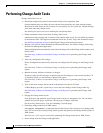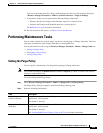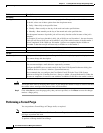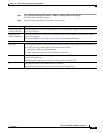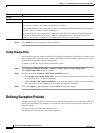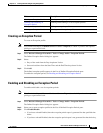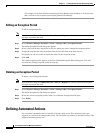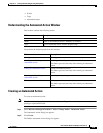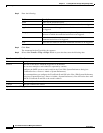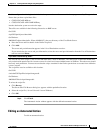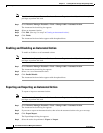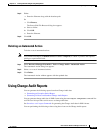
13-6
User Guide for Resource Manager Essentials 4.1
OL-11714-01
Chapter 13 Tracking Network Changes Using Change Audit
Defining Exception Periods
Step 3 Click Submit for the forced purge to become effective.
Config Change Filter
You can use this option to enable or disable VLAN Change audit filtering. When there is a change to the
device configuration, a change record is created. By default, the VLAN change audit record is created
for those devices that have a VLAN configuration.
To enable or disable the VLAN Change Audit Filter option:
Step 1 Select Resource Manager Essentials > Admin > Change Audit > Config Change Filter
The Config Change Filter dialog box appears.
Step 2 Check or uncheck the Enable VLAN Change Audit Filter option.
• Check Enable vlan Change Audit Filter, if you do not want the change audit record to be created
for devices that have a VLAN configuration.
• Uncheck Enable vlan Change Audit Filter, if you want the change audit record to be created for
devices that have VLAN configuration. By default, this option is unchecked.
Step 3 Click either Apply to apply the option or click Cancel to discard the changes.
Defining Exception Periods
An Exception period is a time you specify when no network changes should occur. This period does not
prevent you from making any changes in your network. The set of Exception periods is known as an
Exception profile.
You can have only one Exception period for a day.
You perform the following tasks for Exception profiles:
Job Info
Job Description Enter a description for the job. This is mandatory. You can enter only alphanumeric characters.
E-mail Enter e-mail addresses to which the job sends messages at the end of the job.
You can enter multiple e-mail addresses separated by commas.
Configure the SMTP server to send e-mails in the View / Edit System Preferences dialog box (Common
Services > Server > Admin > System Preferences).
We recommend that you configure the CiscoWorks E-mail ID in the View / Edit System Preferences
dialog box (Common Services > Server > Admin > System Preferences). When the job starts or
completes, an e-mail is sent with the CiscoWorks E-mail ID as the sender's address.
Field Description



